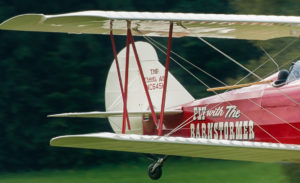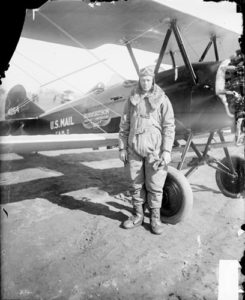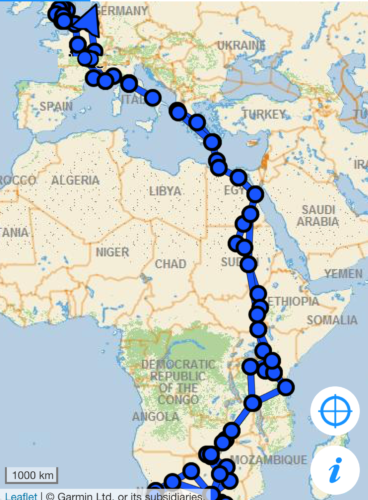I’m always puzzled by the awe with which so many people — some of them pilots themselves — regard those of us who regularly fly to other continents.
From Day One, there was clearly nothing superhuman to me about the feat, especially given the incredible capability and redundancy of the equipment we operate. Modern business jets are as well equipped as any airliner. Sometimes better, in fact. There are backups for everything, and then backups for the backups, and procedures for dealing with even those systems, should they go south. All this on an aircraft where a failure of any consequential item is already extraordinarily rare.
As I’ve noted previously, the most challenging part of the job isn’t the flying. Rather, it’s keeping up with the varied rules and regulations for each country’s airspace. The customs and immigration procedures. The layers and layers of administrative tasks. The language barriers, time zone changes, and so on. The actual flying becomes the predictable, straightforward aspect of it all. And I’ve got absolutely no problem with that. It ought to be boring, because that’s the level of safety expected for modern day commercial air travel.
So that’s the long way of saying I wouldn’t be too impressed by “extended range” flying. If you want impressive, let me tell you about a long-time friend and student of mine. We got to know one another when he appeared on my schedule for a primary aerobatic course, where he mastered loops, rolls, spins, and loop/roll combinations like the Immelmann, split S, and barrel roll.

I also taught him to fly tailwheel aircraft, and in retrospect it’s one of the most significant endorsements I’ve ever provided. Later, I was his CFI during commercial certificate training. The following year he bought a beautifully restored 1929 Travel Air 4000 biplane, and I provided some instruction in that as well.
If you’re not familiar with the Travel Air, it’s a link to the earliest days of aviation. I’ve seen the original Bill of Sale for the aircraft: it was signed by Walter Beech. Yeah, THAT Walter Beech. The lower surface of the wing has a concave curve to it, as many early airfoil designs did. And although the original Wright J-6 powerplant since has been replaced by the more ubiquitous Continental W670 radial, it’s still a 90 year old tube-and-fabric, open cockpit antique. On a good day you’ll get 85 mph out of in cruise.
That’s to say the airplane isn’t much good for going anywhere. Or at least, that’s what I always thought. As far as I know, my friend never ventured too far away with the Travel Air… until one day when he called an asked a few questions about international procedures, equipment requirements for Europe, VFR airspace and charts for the Continent. I assumed he was going to be taking some lessons at a local flight school over there.

Nope. He was having his Travel Air shipped to England so he could fly it VFR across the Channel and the rest of Europe toward Greece. Then from Crete, across the Mediterranean to Egypt, and down the full length of the African continent to Cape Town, South Africa.
I’ll be honest, my first thought was, “Is this a joke?”. My second was, “Are you crazy?”. And my third: “How are you going to get approval for any of this?”. My jet will make a trip like that, but it comes with a team of professionals to handle the permits, fees, rules, permissions, and mounds of paperwork that always accompany such a journey. I wondered what a Flight Risk Analysis app would say about a trip like this…
On further investigation, he was joining a group of intrepid barnstormers who were recreating the early 20th century mail routes which ran the length of Africa. They called it the Vintage Air Rally. As I remember, my friend described it to me as “a little adventure”. Boy, was it ever.
You’ll see him and his aircraft in this video, which provides a small sense of what they experienced:
But it gets better. When the rally ended in Cape Town, the other pilots had their airplanes disassembled and shipped back home — “home” being places which were, for the most part, a lot closer to South Africa than southern California. My friend? He decided to fly back to England.
On his own.
Here’s a map he sent me after reaching the U.K. I stared at that image for a long time. Imagine the weather, the unimproved strips, the mechanical issues, and so on that he had experienced. I know at least one aircraft on the Vintage Air Rally crashed.
My friend regaled me for an hour with stories about being detained for days after a bit of paperwork was not where it should have been. Another time he suffered a broken crankshaft in flight. After a safe landing, he had a new engine sourced, shipped, and installed by his mechanic (who flew all the way from California and arrived at the same time the engine did) within a day or two. He had encounters with IMC, extreme density altitudes, and winds we rarely see back home.
On the other hand, his tale also included moments like landing in the dirt of a remote village only to find the people there had never seen an airplane before and didn’t know what his machine was. Can you imagine giving a ride to a kid who has no concept of what an aircraft is, who has never seen even a photograph of one before?
The Air Rally participants received permission to make close fly-bys of normally restricted wonders like the Egyptian pyramids and Victoria Falls. And just by virtue of the low altitude and VFR flying, they saw things from the air I’ll never see in my airplane. I love this story because it helps explain the wonder of light general aviation to people whose concept of flying is limited to utilitarian aluminum tubes and airline terminals.
By the time he had completed the trip and was ready to crate his biplane, if memory serves he had flown something like 15,000 miles across some of the most challenging and inspiring terrain on Earth. To me, this is the kind of adventure I imagine when the word “awe” is uttered. Even the Earthrounders aren’t as impressive, because while they have circumnavigated the globe, they’re usually flying much more capable equipment and operate out of established airports. The Vintage Air Rally was barnstorming writ large, and I doubt anything will top it in the flying careers of those who participated.
I told my friend that there are pilots, and then there are aviators. The transformative experience of flying across Africa in that open cockpit antique qualified him as the latter. They were things which could not be duplicated or taught. In today’s world of highly equipped, almost antiseptic aviation, perhaps that’s what made them so special.
As far as I was concerned, from now on, he should be teaching me. I dunno if that comment played a part in what comes next, but he’s now working on his flight instructor certificate.
